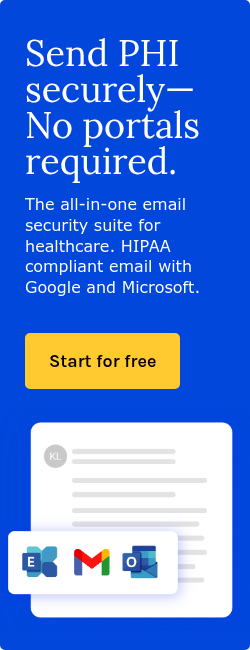
Cybersecurity has become a cornerstone of operational success for healthcare organizations. In 2025, the stakes are higher than ever: patient trust, regulatory compliance, and financial stability all hinge on robust cybersecurity practices. As noted in a study by Pius Ewoh and Tero Vartiainen, Vulnerability to Cyberattacks and Sociotechnical Solutions for Health Care Systems: Systematic Review, "Cybersecurity education is seriously lacking. Moreover, a critical problem with cybersecurity in healthcare systems is the lack of involvement or recruitment of people with expertise and training in cybersecurity, resulting in considerable neglect of the cybersecurity infrastructure." Their systematic review revealed that between 2018 and 2019, more than 24% of data breaches across all industries occurred within the healthcare sector — a clear warning about systemic vulnerabilities.
Now in 2025, these issues have only intensified. Cybercriminals increasingly target healthcare — a sector where sensitive personal data and life-critical systems make for high-value, high-impact targets.
This has called for cybersecurity training to evolve dramatically, especially in light of the 2025 HIPAA Security Rule updates.
Why cybersecurity training matters in 2025
Healthcare breaches have skyrocketed. According to the Department of Health and Human Services' (HHS) Office for Civil Rights (OCR), the number of reported healthcare breaches in 2025 sits at 209. The financial impact is equally staggering. IBM’s Cost of a Data Breach 2024 report found that the average breach costs $4.88 million, “a 10% increase over last year and the highest total ever.” These statistics stress the growing vulnerability of the healthcare sector and the urgent need for organizations to strengthen their cybersecurity frameworks. As cyberattacks become more sophisticated and frequent, healthcare providers, insurers, and business associates must prioritize cybersecurity training to comply with regulations and to safeguard patient trust and organizational reputation.
The 2025 HIPAA Security Rule updates
The 2025 HIPAA Security Rule updates, published on January 6, 2025, place even greater emphasis on proactive risk management and workforce security awareness. Key highlights include:
- Encryption of ePHI: Required encryption of electronic protected health information (ePHI) both at rest and in transit to prevent unauthorized access.
- Mandatory multifactor authentication (MFA): All systems accessing ePHI must implement MFA.
- Network segmentation: Organizations must segment networks to limit lateral movement by attackers during breaches.
- Regular vulnerability scanning and penetration testing: Mandatory routine scans and penetration tests to proactively identify and address security gaps.
- Annual HIPAA Security Rule compliance audits: Organizations must conduct formal audits every year to demonstrate compliance.
- Enhanced incident response plans: Organizations are required to develop and maintain detailed response strategies for cybersecurity incidents.
- Updated contingency planning: Healthcare entities must ensure they can restore critical operations within 72 hours after a cyberattack.
- Elimination of "Addressable" vs. "Required" safeguard distinctions: Most technical and administrative safeguards are now mandatory, reducing flexibility and emphasizing strict compliance.
With the updated regulations, cybersecurity training in 2025 has become far more structured, rigorous, and continuous. Staff at all levels must be trained to recognize and prevent cyber threats. They must also be trained to actively uphold compliance with these stricter HIPAA standards. Training now covers technical best practices like encryption use, secure authentication procedures, incident reporting protocols, and contingency operations, with annual refreshers and real-world simulations becoming the norm. Ultimately, cybersecurity training is no longer just a compliance checkbox, it is an important and strategic investment in protecting patient safety, organizational resilience, and long-term reputation.
Go deeper: HHS proposes updated HIPAA security rule
Challenges in cybersecurity training
A comprehensive study titled Navigating Cybersecurity Training: A Comprehensive Review by Saif Al-Dean Qawasmeh, et al., delves into the multifaceted challenges of cybersecurity training. Published in January 2024, this review examines traditional, technology-based, and innovative training methods, demonstrating their respective strengths and limitations.
The study identifies several challenges in cybersecurity training:
- Engagement and retention: Traditional training methods often struggle to maintain employee engagement, leading to poor retention of important security practices.
- Adaptability to emerging threats: Rapidly evolving cyber threats require training programs that can quickly adapt, a feat not always achievable with conventional approaches.
- Resource constraints: Implementing comprehensive training programs can be resource-intensive, posing difficulties for organizations with limited budgets.
- Measuring effectiveness: Assessing the real-world impact of training programs remains a complex task, with organizations seeking reliable metrics to gauge success.
Cybersecurity training in 2025
To address these challenges, the authors of the study Navigating Cybersecurity Training: A Comprehensive Review explore emerging trends such as the integration of artificial intelligence and extended reality into training programs. These technologies offer personalized and immersive learning experiences, potentially enhancing engagement and effectiveness.
Gamification
- What it is: Integrating game-like elements such as scores, badges, and leaderboards into training modules.
- How it helps: Increases motivation, participation, and information retention by making learning interactive and fun.
Artificial intelligence (AI)-driven personalization
- What it is: Using AI to assess learners’ progress, tailor content, and deliver adaptive learning paths.
- How it helps: Ensures that each employee receives training at the appropriate difficulty and relevance level, improving both engagement and learning outcomes.
Read also: Artificial Intelligence in healthcare
Immersive technologies (e.g., VR and AR)
- What it is: Using extended reality (XR), such as virtual reality (VR) simulations, to create real-world cyberattack scenarios.
- How it helps: Provides hands-on experience, enhances situational awareness, and builds readiness in high-stress environments.
Microlearning and modular content
- What it is: Delivering short, focused lessons that employees can complete in minutes.
- How it helps: Reduces training fatigue and improves retention by reinforcing key messages in manageable doses.
Continuous learning and just-in-time training
- What it is: Ongoing learning delivered at critical points—such as immediately before accessing sensitive systems.
- How it helps: Reinforces learning in real-time, helping employees apply best practices when it matters most.
Behavioral analytics
- What it is: Monitoring user behavior to detect risky patterns and trigger targeted interventions or training.
- How it helps: Enables proactive training and risk mitigation based on actual user actions rather than static policies.
See also:
- Behavioral biometrics in the authentication process
- Using behavioral analytics in HIPAA compliant email marketing
Security awareness champions
- What it is: Appointing trained staff within departments to promote and model good security practices.
- How it helps: Builds grassroots support for cybersecurity and fosters a security-first culture across the organization.
Related: The four pillars of security awareness
Measurement and feedback loops
- What it is: Embedding assessments, feedback tools, and metrics into training platforms.
- How it helps: Allows organizations to track progress, measure knowledge retention, and continually refine training content based on data.
See also: HIPAA Compliant Email: The Definitive Guide (2025 Update)
FAQS
Who is required to undergo cybersecurity training?
All employees, contractors, and vendors with access to systems handling ePHI must receive training. This includes administrative staff, IT personnel, clinicians, billing staff, and even C-suite executives.
How do we evaluate the effectiveness of our cybersecurity training program?
Effective evaluation includes:
- Monitoring phishing simulation results
- Tracking incident reports and response times
- Reviewing audit outcomes
- Soliciting employee feedback
- Measuring behavior change over time (e.g., fewer risky clicks)
How can healthcare organizations keep training relevant with evolving threats?
- Partner with cybersecurity firms for threat intelligence updates
- Subscribe to healthcare-specific threat feeds (e.g., HHS HC3, CISA)
- Regularly update content in line with current risks and regulatory changes
- Incorporate lessons learned from recent breaches and incident postmortems
Subscribe to Paubox Weekly
Every Friday we'll bring you the most important news from Paubox. Our aim is to make you smarter, faster.




